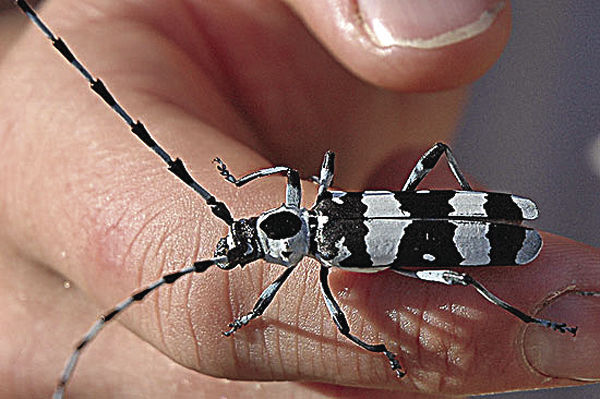Banded alder borer common here
Published 5:00 pm Tuesday, September 6, 2011

- <p>Banded alder borers like this are common insects in our area.</p>
Many of us are fairly comfortable when it comes to identifying the majority of insect pests that seem to thrive in our coastal climate. Ladybird beetles, aphids, earwigs, ground beetles and caterpillars are just a few of the common pests that insist on sharing our gardens with us. In addition to these pests that are so well known, there are an equal number that, although common here, are not seen as frequently. When found, these unfamiliar and sometimes exotic looking insects often result in enormous anxiety as to what they are and what they might do to our residential landscapes.
Trending
One that is frequently brought into the extension office this time of year for identification is the Banded Alder Borer, sometimes called the California Laurel Borer. These insects are most often confused with the notorious Asian Longhorn Beetles which have voracious appetites and can cause enormous damage to plants including shade trees. Fortunately, so far, there have been only a limited number of Asian Longhorn Beetles found in Washington state and they were quickly identified and destroyed. No reproducing populations of Asian Longhorn beetles have been found in the state. California Laurel Borers on the other hand are fairly common.
The California Laurel Borer is a striking insect with three bluish-gray bands across its back. Its about two inches long with spectacular antennae that are also black and white banded. These beetles feed on a variety of downed hardwood logs, especially alder, willow and cottonwood. Most of these beetles appear this time of year and more often than not are found around piles of firewood. Although they will not infest hardwood floors, its still a good idea to squash them if you find them inside your house.
Another common but not often seen insect is the giant water bug. Measuring up to two inches long, this brownish colored aquatic insect is quite awesome the first time it is encountered, due to its shear size. It is a strong flier and is commonly found some distance from the fresh water in which it lives. These insects are frequently attracted to lights and most often are found on porch floors. They feed on tadpoles, small fish, and insects by means of a needle like beak. They may also jab the beak into fingers, etc., resulting in a very painful wound. They are pretty much a novelty and are not known to feed on garden plants or damage structures.
Trending
A third insect that is often brought into the extension office this time of year is the noisy and ferocious looking horntail wasp. These black or dark blue insects are usually 1-1/2 inches long, and have an intimidating spearlike projection on the tail end that most people believe to be a stinger. In reality, the projection is a specialized device for egg laying called an ovipositor.
Adult horntails are attracted to weakened, dying, or newly downed trees. The female inserts her ovipositor as much as 1/2-inch into the wood to lay her eggs. Eggs are laid singly, but each female is capable of laying 300 to 400 eggs. After three to four weeks, eggs hatch and the larvae chew their way into the sapwood and heartwood. The tunnels may be from 1- to 2- feet in length. The larvae take two to three years to develop before the new adult wasps chew out of the wood through 1/2-inch holes.
Horntail wasps sometimes emerge into houses through sheetrock. These wasps come from larvae living in the studs behind the sheetrock. This happens when the studs were cut from infested logs that contained horntail larvae that survived because the studs were not kiln dried or were inadequately dried. There is no practical way to treat lumber within walls to control horntails that have not yet emerged. Wasps and emergence holes are usually few in number and scattered within the house and the chances of structural damage to the walls are very slim.
Horntail wasps do not bite or sting. Also, they cannot infest lumber after it has been cut so there is no risk of additional generations of horntail in the studs or household furniture. Most horntail wasps will emerge within the first year of construction, though a few may linger as long as 2 or 3 years after construction.









